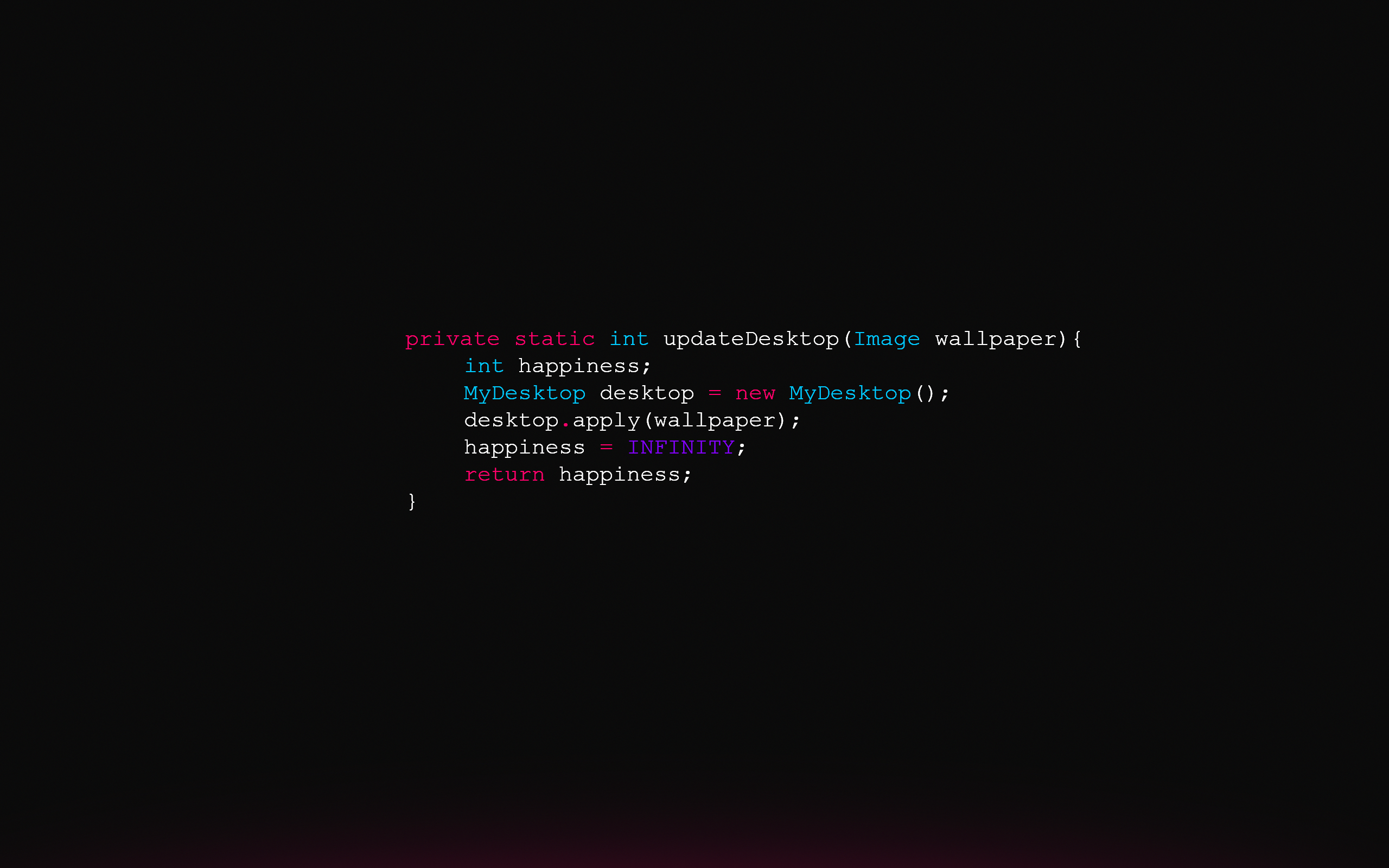装饰器 [说明] Decorator 提案经过了大幅修改,目前还没有定案,不知道语法会不会再变。下面的内容完全依据以前的提案,已经有点过时了。等待定案以后,需要完全重写。
装饰器(Decorator)是一种与类(class)相关的语法,用来注释或修改类和类方法。许多面向对象的语言都有这项功能,目前有一个提案 将其引入了 ECMAScript。
装饰器是一种函数,写成@ + 函数名。它可以放在类和类方法的定义前面。
1 2 3 4 5 6 7 8 @frozen class Foo @configurable(false ) @enumerable(true ) method ( @throttle(500 ) expensiveMethod ( }
上面代码一共使用了四个装饰器,一个用在类本身,另外三个用在类方法。它们不仅增加了代码的可读性,清晰地表达了意图,而且提供一种方便的手段,增加或修改类的功能。
类的装饰 装饰器可以用来装饰整个类。
1 2 3 4 5 6 7 8 9 10 @testable class MyTestableClass } function testable (target ) target.isTestable = true ; } MyTestableClass.isTestable
上面代码中,@testable就是一个装饰器。它修改了MyTestableClass这个类的行为,为它加上了静态属性isTestable。testable函数的参数target是MyTestableClass类本身。
基本上,装饰器的行为就是下面这样。
1 2 3 4 5 6 7 @decorator class A class A A = decorator(A) || A;
也就是说,装饰器是一个对类进行处理的函数。装饰器函数的第一个参数,就是所要装饰的目标类。
1 2 3 function testable (target ) }
上面代码中,testable函数的参数target,就是会被装饰的类。
如果觉得一个参数不够用,可以在装饰器外面再封装一层函数。
1 2 3 4 5 6 7 8 9 10 11 12 13 function testable (isTestable ) return function (target ) target.isTestable = isTestable; } } @testable(true ) class MyTestableClass MyTestableClass.isTestable @testable(false ) class MyClass MyClass.isTestable
上面代码中,装饰器testable可以接受参数,这就等于可以修改装饰器的行为。
注意,装饰器对类的行为的改变,是代码编译时发生的,而不是在运行时。这意味着,装饰器能在编译阶段运行代码。也就是说,装饰器本质就是编译时执行的函数。
前面的例子是为类添加一个静态属性,如果想添加实例属性,可以通过目标类的prototype对象操作。
1 2 3 4 5 6 7 8 9 function testable (target ) target.prototype.isTestable = true ; } @testable class MyTestableClass let obj = new MyTestableClass();obj.isTestable
上面代码中,装饰器函数testable是在目标类的prototype对象上添加属性,因此就可以在实例上调用。
下面是另外一个例子。
1 2 3 4 5 6 7 8 9 10 11 12 13 14 15 16 17 18 19 export function mixins (...list ) return function (target ) Object .assign(target.prototype, ...list) } } import { mixins } from './mixins' const Foo = { foo (console .log('foo' ) } }; @mixins(Foo) class MyClass let obj = new MyClass();obj.foo()
上面代码通过装饰器mixins,把Foo对象的方法添加到了MyClass的实例上面。可以用Object.assign()模拟这个功能。
1 2 3 4 5 6 7 8 9 10 const Foo = { foo (console .log('foo' ) } }; class MyClass Object .assign(MyClass.prototype, Foo);let obj = new MyClass();obj.foo()
实际开发中,React 与 Redux 库结合使用时,常常需要写成下面这样。
1 2 3 class MyReactComponent extends React .Component export default connect(mapStateToProps, mapDispatchToProps)(MyReactComponent);
有了装饰器,就可以改写上面的代码。
1 2 @connect(mapStateToProps, mapDispatchToProps) export default class MyReactComponent extends React .Component
相对来说,后一种写法看上去更容易理解。
方法的装饰 装饰器不仅可以装饰类,还可以装饰类的属性。
1 2 3 4 class Person @readonly name (return `${this .first} ${this .last} ` } }
上面代码中,装饰器readonly用来装饰“类”的name方法。
装饰器函数readonly一共可以接受三个参数。
1 2 3 4 5 6 7 8 9 10 11 12 13 14 15 function readonly (target, name, descriptor ) descriptor.writable = false ; return descriptor; } readonly(Person.prototype, 'name' , descriptor); Object .defineProperty(Person.prototype, 'name' , descriptor);
装饰器第一个参数是类的原型对象,上例是Person.prototype,装饰器的本意是要“装饰”类的实例,但是这个时候实例还没生成,所以只能去装饰原型(这不同于类的装饰,那种情况时target参数指的是类本身);第二个参数是所要装饰的属性名,第三个参数是该属性的描述对象。
另外,上面代码说明,装饰器(readonly)会修改属性的描述对象(descriptor),然后被修改的描述对象再用来定义属性。
下面是另一个例子,修改属性描述对象的enumerable属性,使得该属性不可遍历。
1 2 3 4 5 6 7 8 9 class Person @nonenumerable get kidCount () { return this .children.length; } } function nonenumerable (target, name, descriptor ) descriptor.enumerable = false ; return descriptor; }
下面的@log装饰器,可以起到输出日志的作用。
1 2 3 4 5 6 7 8 9 10 11 12 13 14 15 16 17 18 19 20 21 22 class Math @log add (a, b ) return a + b; } } function log (target, name, descriptor ) var oldValue = descriptor.value; descriptor.value = function ( console .log(`Calling ${name} with` , arguments ); return oldValue.apply(this , arguments ); }; return descriptor; } const math = new Math ();math.add(2 , 4 );
上面代码中,@log装饰器的作用就是在执行原始的操作之前,执行一次console.log,从而达到输出日志的目的。
装饰器有注释的作用。
1 2 3 4 5 6 @testable class Person @readonly @nonenumerable name (return `${this .first} ${this .last} ` } }
从上面代码中,我们一眼就能看出,Person类是可测试的,而name方法是只读和不可枚举的。
下面是使用 Decorator 写法的组件 ,看上去一目了然。
1 2 3 4 5 6 7 8 9 10 11 12 13 14 15 @Component({ tag : 'my-component' , styleUrl : 'my-component.scss' }) export class MyComponent @Prop() first: string; @Prop() last: string; @State() isVisible: boolean = true ; render ( return ( <p > Hello, my name is {this.first} {this.last}</p > ); } }
如果同一个方法有多个装饰器,会像剥洋葱一样,先从外到内进入,然后由内向外执行。
1 2 3 4 5 6 7 8 9 10 11 12 13 14 function dec (id ) console .log('evaluated' , id); return (target, property, descriptor ) => console .log('executed' , id); } class Example @dec(1 ) @dec(2 ) method ( }
上面代码中,外层装饰器@dec(1)先进入,但是内层装饰器@dec(2)先执行。
除了注释,装饰器还能用来类型检查。所以,对于类来说,这项功能相当有用。从长期来看,它将是 JavaScript 代码静态分析的重要工具。
为什么装饰器不能用于函数? 装饰器只能用于类和类的方法,不能用于函数,因为存在函数提升。
1 2 3 4 5 6 7 8 9 var counter = 0 ;var add = function ( counter++; }; @add function foo (}
上面的代码,意图是执行后counter等于 1,但是实际上结果是counter等于 0。因为函数提升,使得实际执行的代码是下面这样。
1 2 3 4 5 6 7 8 9 10 11 12 @add function foo (} var counter;var add;counter = 0 ; add = function ( counter++; };
下面是另一个例子。
1 2 3 4 5 var readOnly = require ("some-decorator" );@readOnly function foo (}
上面代码也有问题,因为实际执行是下面这样。
1 2 3 4 5 6 7 var readOnly;@readOnly function foo (} readOnly = require ("some-decorator" );
总之,由于存在函数提升,使得装饰器不能用于函数。类是不会提升的,所以就没有这方面的问题。
另一方面,如果一定要装饰函数,可以采用高阶函数的形式直接执行。
1 2 3 4 5 6 7 8 9 10 11 12 13 14 function doSomething (name ) console .log('Hello, ' + name); } function loggingDecorator (wrapped ) return function ( console .log('Starting' ); const result = wrapped.apply(this , arguments ); console .log('Finished' ); return result; } } const wrapped = loggingDecorator(doSomething);
core-decorators.js core-decorators.js 是一个第三方模块,提供了几个常见的装饰器,通过它可以更好地理解装饰器。
(1)@autobind
autobind装饰器使得方法中的this对象,绑定原始对象。
1 2 3 4 5 6 7 8 9 10 11 12 13 14 import { autobind } from 'core-decorators' ;class Person @autobind getPerson ( return this ; } } let person = new Person();let getPerson = person.getPerson;getPerson() === person;
(2)@readonly
readonly装饰器使得属性或方法不可写。
1 2 3 4 5 6 7 8 9 10 import { readonly } from 'core-decorators' ;class Meal @readonly entree = 'steak' ; } var dinner = new Meal();dinner.entree = 'salmon' ;
(3)@override
override装饰器检查子类的方法,是否正确覆盖了父类的同名方法,如果不正确会报错。
1 2 3 4 5 6 7 8 9 10 11 12 13 14 15 16 17 18 19 20 21 import { override } from 'core-decorators' ;class Parent speak (first, second ) } class Child extends Parent @override speak ( } class Child extends Parent @override speaks ( }
(4)@deprecate (别名@deprecated)
deprecate或deprecated装饰器在控制台显示一条警告,表示该方法将废除。
1 2 3 4 5 6 7 8 9 10 11 12 13 14 15 16 17 18 19 20 21 22 23 24 25 26 import { deprecate } from 'core-decorators' ;class Person @deprecate facepalm ( @deprecate('We stopped facepalming' ) facepalmHard ( @deprecate('We stopped facepalming' , { url : 'http://knowyourmeme.com/memes/facepalm' }) facepalmHarder ( } let person = new Person();person.facepalm(); person.facepalmHard(); person.facepalmHarder();
(5)@suppressWarnings
suppressWarnings装饰器抑制deprecated装饰器导致的console.warn()调用。但是,异步代码发出的调用除外。
1 2 3 4 5 6 7 8 9 10 11 12 13 14 15 16 import { suppressWarnings } from 'core-decorators' ;class Person @deprecated facepalm ( @suppressWarnings facepalmWithoutWarning ( this .facepalm(); } } let person = new Person();person.facepalmWithoutWarning();
使用装饰器实现自动发布事件 我们可以使用装饰器,使得对象的方法被调用时,自动发出一个事件。
1 2 3 4 5 6 7 8 9 10 11 12 13 14 15 16 17 18 19 20 const postal = require ("postal/lib/postal.lodash" );export default function publish (topic, channel ) const channelName = channel || '/' ; const msgChannel = postal.channel(channelName); msgChannel.subscribe(topic, v => console .log('频道: ' , channelName); console .log('事件: ' , topic); console .log('数据: ' , v); }); return function (target, name, descriptor ) const fn = descriptor.value; descriptor.value = function ( let value = fn.apply(this , arguments ); msgChannel.publish(topic, value); }; }; }
上面代码定义了一个名为publish的装饰器,它通过改写descriptor.value,使得原方法被调用时,会自动发出一个事件。它使用的事件“发布/订阅”库是Postal.js 。
它的用法如下。
1 2 3 4 5 6 7 8 9 10 11 12 13 14 15 16 17 18 import publish from './publish' ;class FooComponent @publish('foo.some.message' , 'component' ) someMethod ( return { my : 'data' }; } @publish('foo.some.other' ) anotherMethod ( } } let foo = new FooComponent();foo.someMethod(); foo.anotherMethod();
以后,只要调用someMethod或者anotherMethod,就会自动发出一个事件。
1 2 3 4 5 6 7 8 $ bash-node index.js 频道: component 事件: foo.some.message 数据: { my: 'data' } 频道: / 事件: foo.some.other 数据: undefined
Mixin 在装饰器的基础上,可以实现Mixin模式。所谓Mixin模式,就是对象继承的一种替代方案,中文译为“混入”(mix in),意为在一个对象之中混入另外一个对象的方法。
请看下面的例子。
1 2 3 4 5 6 7 8 9 10 const Foo = { foo (console .log('foo' ) } }; class MyClass Object .assign(MyClass.prototype, Foo);let obj = new MyClass();obj.foo()
上面代码之中,对象Foo有一个foo方法,通过Object.assign方法,可以将foo方法“混入”MyClass类,导致MyClass的实例obj对象都具有foo方法。这就是“混入”模式的一个简单实现。
下面,我们部署一个通用脚本mixins.js,将 Mixin 写成一个装饰器。
1 2 3 4 5 export function mixins (...list ) return function (target ) Object .assign(target.prototype, ...list); }; }
然后,就可以使用上面这个装饰器,为类“混入”各种方法。
1 2 3 4 5 6 7 8 9 10 11 import { mixins } from './mixins' ;const Foo = { foo (console .log('foo' ) } }; @mixins(Foo) class MyClass let obj = new MyClass();obj.foo()
通过mixins这个装饰器,实现了在MyClass类上面“混入”Foo对象的foo方法。
不过,上面的方法会改写MyClass类的prototype对象,如果不喜欢这一点,也可以通过类的继承实现 Mixin。
1 2 3 class MyClass extends MyBaseClass }
上面代码中,MyClass继承了MyBaseClass。如果我们想在MyClass里面“混入”一个foo方法,一个办法是在MyClass和MyBaseClass之间插入一个混入类,这个类具有foo方法,并且继承了MyBaseClass的所有方法,然后MyClass再继承这个类。
1 2 3 4 5 let MyMixin = (superclass ) => class extends superclass foo ( console .log('foo from MyMixin' ); } };
上面代码中,MyMixin是一个混入类生成器,接受superclass作为参数,然后返回一个继承superclass的子类,该子类包含一个foo方法。
接着,目标类再去继承这个混入类,就达到了“混入”foo方法的目的。
1 2 3 4 5 6 class MyClass extends MyMixin (MyBaseClass ) } let c = new MyClass();c.foo();
如果需要“混入”多个方法,就生成多个混入类。
1 2 3 class MyClass extends Mixin1 (Mixin2 (MyBaseClass )) }
这种写法的一个好处,是可以调用super,因此可以避免在“混入”过程中覆盖父类的同名方法。
1 2 3 4 5 6 7 8 9 10 11 12 13 14 15 16 17 18 19 20 21 22 23 24 25 26 let Mixin1 = (superclass ) => class extends superclass foo ( console .log('foo from Mixin1' ); if (super .foo) super .foo(); } }; let Mixin2 = (superclass ) => class extends superclass foo ( console .log('foo from Mixin2' ); if (super .foo) super .foo(); } }; class S foo ( console .log('foo from S' ); } } class C extends Mixin1 (Mixin2 (S )) foo ( console .log('foo from C' ); super .foo(); } }
上面代码中,每一次混入发生时,都调用了父类的super.foo方法,导致父类的同名方法没有被覆盖,行为被保留了下来。
Trait Trait 也是一种装饰器,效果与 Mixin 类似,但是提供更多功能,比如防止同名方法的冲突、排除混入某些方法、为混入的方法起别名等等。
下面采用traits-decorator 这个第三方模块作为例子。这个模块提供的traits装饰器,不仅可以接受对象,还可以接受 ES6 类作为参数。
1 2 3 4 5 6 7 8 9 10 11 12 13 14 15 16 import { traits } from 'traits-decorator' ;class TFoo foo (console .log('foo' ) } } const TBar = { bar (console .log('bar' ) } }; @traits(TFoo, TBar) class MyClass let obj = new MyClass();obj.foo() obj.bar()
上面代码中,通过traits装饰器,在MyClass类上面“混入”了TFoo类的foo方法和TBar对象的bar方法。
Trait 不允许“混入”同名方法。
1 2 3 4 5 6 7 8 9 10 11 12 13 14 15 16 17 import { traits } from 'traits-decorator' ;class TFoo foo (console .log('foo' ) } } const TBar = { bar (console .log('bar' ) }, foo (console .log('foo' ) } }; @traits(TFoo, TBar) class MyClass
上面代码中,TFoo和TBar都有foo方法,结果traits装饰器报错。
一种解决方法是排除TBar的foo方法。
1 2 3 4 5 6 7 8 9 10 11 12 13 14 15 16 17 import { traits, excludes } from 'traits-decorator' ;class TFoo foo (console .log('foo' ) } } const TBar = { bar (console .log('bar' ) }, foo (console .log('foo' ) } }; @traits(TFoo, TBar ::excludes('foo' )) class MyClass let obj = new MyClass();obj.foo() obj.bar()
上面代码使用绑定运算符(::)在TBar上排除foo方法,混入时就不会报错了。
另一种方法是为TBar的foo方法起一个别名。
1 2 3 4 5 6 7 8 9 10 11 12 13 14 15 16 17 18 import { traits, alias } from 'traits-decorator' ;class TFoo foo (console .log('foo' ) } } const TBar = { bar (console .log('bar' ) }, foo (console .log('foo' ) } }; @traits(TFoo, TBar ::alias({foo : 'aliasFoo' })) class MyClass let obj = new MyClass();obj.foo() obj.aliasFoo() obj.bar()
上面代码为TBar的foo方法起了别名aliasFoo,于是MyClass也可以混入TBar的foo方法了。
alias和excludes方法,可以结合起来使用。
1 2 @traits(TExample::excludes('foo' ,'bar' )::alias({baz :'exampleBaz' })) class MyClass
上面代码排除了TExample的foo方法和bar方法,为baz方法起了别名exampleBaz。
as方法则为上面的代码提供了另一种写法。
1 2 @traits(TExample::as ({excludes :['foo' , 'bar' ], alias : {baz : 'exampleBaz' }})) class MyClass










